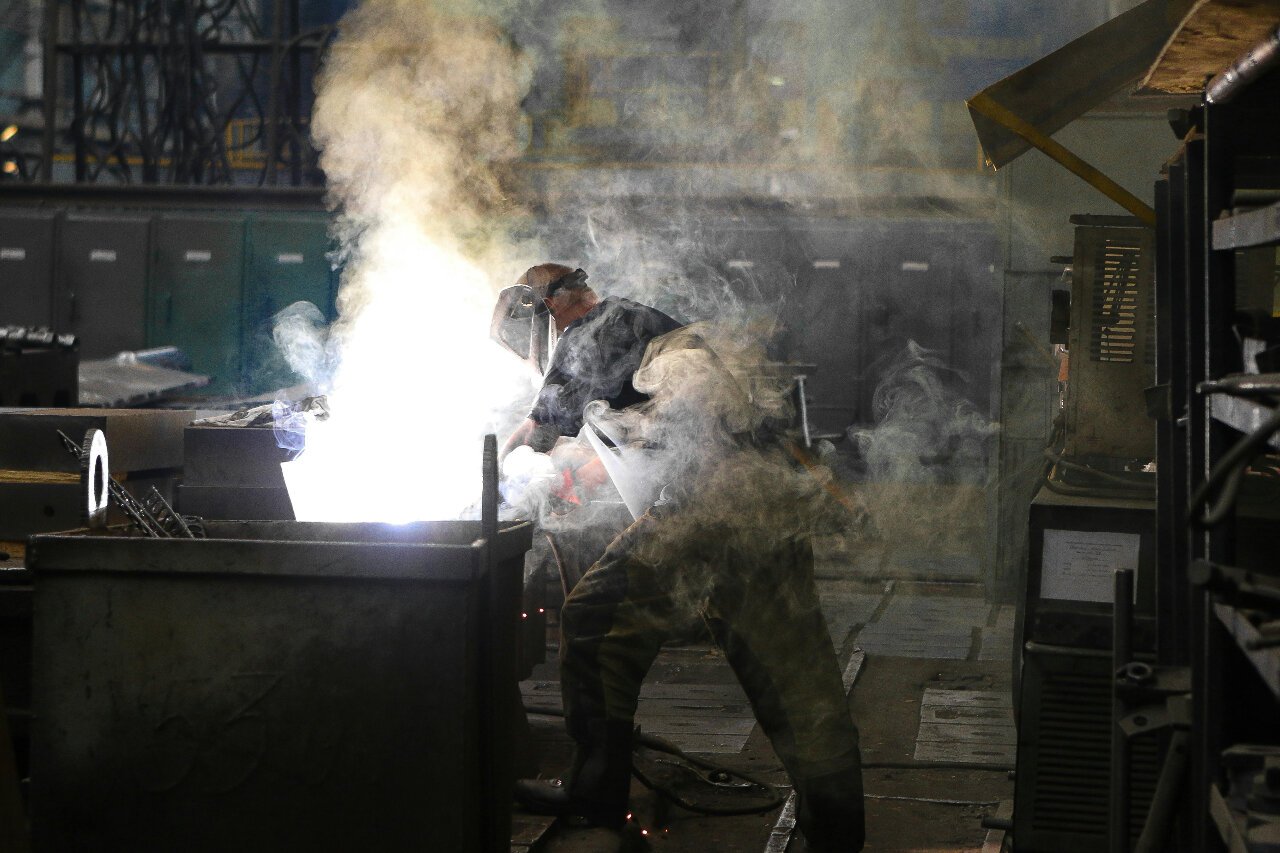Metal Forming Services in Kitchener-Waterloo
Curious about metal forming services in the Kitchener-Waterloo area? Metal forming is utilized in many industries across Canada, serving a pivotal role in manufacturing, automotive, consumer electronics, and more. Although you may know it as metal forming, this term is a catch-all for various techniques used to shape metal. Keep reading to explore our metal forming services while gaining a better understanding of metal forming and how it works.
What Is Metal Forming
Metal forming is a catch-all term used to describe the manufacturing processes that shape metal without breaking it. There are various tools capable of performing metal forming, both manually and through automation. Different metal forming processes allow for cold forming (forming the metal at room temperature), hot forming (forming the metal at an elevated temperature), and warm forming (above room temperature but below hot forming temperatures). This practice plays a significant role in society, helping to construct homes, commercial buildings, vehicles, and common appliances. Metalworking allows for superior efficiency, durability, and effectiveness in a wide range of applications.
Metal Forming Services That BSG Offers
At BSG Inc., we’ve produced high-quality manufacturing products for consumers and businesses across the Kitchener-Waterloo region. With more than 35 years of experience using various metal forming techniques, we’re your all-in-one solution for metalworking services. Below are some of the metal forming services we offer:
Metal Fabrication
Metal fabrication includes not just metal forming, but also cutting, fitting, and assembling. Our metal fabrication services are diverse—we draw and design prototypes while also bringing them to life. With tools like our laser cutting machine, lathe, and manual and CNC milling machines, we offer precise end-to-end manufacturing that meets exact specifications. We’ve manufactured prototypes, custom materials, material handling equipment, and more for industries such as automotive, mining, construction, and environmental services.
Find out how our laser cutting machine works.
Discover what machining tools we use.
Welding
Although not specifically for shaping metal, welding plays a crucial role in combining metals and is a common step in the metal shaping process. We typically weld carbon, aluminum, and stainless steel. With certification from the Canadian Welding Bureau and the American Welding Society, our team is trained to handle projects that vary in size and complexity. Our welding supervisors ensure precision at all times, bolstering BSG Inc.’s quality control with each project we undertake.
We welcome you to contact us today if you’re interested in any of our welding, metal fabrication, or other metal forming services.
How Does Metal Forming Work and What Equipment Is Used?
How have humans come to shape materials as stiff and unmoving as metal? It’s simple. Metal forming depends on a repeatable process that exploits metal’s ability to deform under stress. The stress is the force applied to the metal divided by the area over which the force is applied. Simply put, stress is what makes metal forming possible. When metal is under stress, it is carefully reformed to take on a new shape without significantly altering, cutting, or breaking the material. This process is known as plastic deformation, where the material undergoes permanent changes without returning to its original shape when the stress is removed.
Metal Forming Equipment
BSG Inc. houses state-of-the-art metal forming equipment and machinery, allowing us to serve a diverse range of projects. We have the ability to laser cut and shear material to exact sizes depending on the complexity of the shape.
Our Brake Press, a machine used in metal forming to bend and shape sheet metal, has a capacity of 220 tons with a 4-meter long bed and precision tooling. Brake presses can work with a variety of metals, including steel, aluminum, brass, and more. The operator places a sheet metal piece between the upper die (attached to the ram) and the lower die (mounted on the bed). When the brake press is activated, the ram descends, pushing the upper die into the lower die. This action bends the sheet metal into the desired angle or shape.
Other equipment that is frequently used in metal forming includes:
Press Machines: Hydraulic, mechanical, and pneumatic presses.
Rollers: Hot and cold rolling mills are utilized for cold and hot forming techniques.
Dies and Molds
Extrusion Machines
Wire Drawing Machines
Advanced and specialized equipment is also used for metal forming, offering enhanced precision with fast turnaround times:
Laser Cutting Machines: Cut or shape metal precisely before forming, as offered by BSG.
CNC Forming Machines: Computer-controlled equipment for precise, automated forming processes.
Hydroforming Machines: Use high-pressure fluid to shape metal, ideal for lightweight and complex designs.
Isothermal Forming Equipment: Maintains consistent temperature for high-precision aerospace components.
FAQ About Metal Forming Services
What is the difference between forming and forging metal?
Forming and forging are both metalworking processes used to shape and manipulate metal, but they involve different techniques, equipment, and applications. Forming refers to a broad category of processes that shape metal by applying forces without removing material. In contrast, forging is a specific metalworking process that shapes metal by applying compressive forces, usually through hammering or pressing, to create a desired shape.
What is the difference between metal forming and drawing?
Metal forming is a broad term that refers to processes that shape metal into desired forms without removing material. It includes any process where force is applied to deform metal. Drawing specifically refers to a metalworking process that involves pulling metal through a die to reduce its cross-sectional area and increase its length. It is a subset within the broader category of metal forming.
What do metals lose during forming?
During forming, metals lose some of their original grain structure as the material is deformed, leading to a phenomenon known as strain hardening. This increases the strength and hardness of the metal at the expense of ductility, as the dislocations in the metal's crystalline structure become more numerous and entangled.

